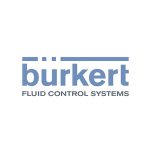Bürkert’s guide to surface acoustic waves
What if we told you it was possible to harness seismic waves like those of an earthquake to measure the flow of liquids? It sounds like madness, doesn’t it? But that’s exactly what Bürkert has achieved with their FLOWave flowmeter, which uses the very same surface acoustic waves you would find in an earthquake’s tremors to deliver super-accurate flow measurements. Here, Kieran Bennett, Field Segment Manager - Food & Beverage at Bürkert, gives us his guide to the power and potential of surface acoustic wave technology.
What are surface acoustic waves?
Surface acoustic waves, also known as SAWs or Rayleigh waves, are essentially sound waves that travel parallel to the surface of an elastic material. They were first discovered in 1885 by Lord Rayleigh and have been studied in great detail ever since. Surface acoustic waves occur naturally and are considered to be the most destructive type of seismic wave produced by earthquakes. They can also be induced and harnessed in electronic components, like interdigital transducers.
How do surface acoustic waves work?
Surface acoustic waves are wave deformations, effectively ripples, that behave much like waves on an ocean. They spread along the surface of a material and their amplitude decays rapidly, often exponentially, through the depth of the material. In nature, seismic waves occur when the jagged edges of two tectonic plates get stuck and then slip past each other along the fault line. We can create similar nanoscale earthquakes using voltage to create a mechanical wave for ultra-precise measurements.
What is a surface acoustic wave sensor?
Surface acoustic wave sensors use inter-digital transducers to create a physical wave and convert it back to an electrical signal. Our FLOWave flowmeter uses this technique to generate surface acoustic waves that propagate across the surface of its measurement tube and decouple into the fluid at a specific angle. The waves generate electrical signals when passing through the fluid once or several times. This occurs in and against the flow direction and any time differences that are detected are proportional to the flow.
What are the benefits of a surface acoustic wave sensor?
The benefits of using a FLOWave flowmeter are manifold. Our patented SAW technology is specifically designed for the in-line flow measurement of fluids. The great benefit of which is that there are no sensor elements in the one-piece, stainless steel tube body. That equates to extremely accurate flow measurements, no pressure drops and no maintenance work. CIP/SIP capable and conforming to sanitary regulations, the compact and lightweight FLOWave is ideal for applications demanding the strictest hygiene standards.
What are surface acoustic wave sensors used for?
Applications of surface acoustic wave devices like FLOWave mainly involve hygiene and measuring the flow of water with low conductivity. FLOWave really comes into its own in pharmaceutical applications, such as in the production of pure media, and in food and beverage applications, typically in the management of CIP and SIP processes. Wherever efficient media changeovers are required between batch processes to minimise wastage and maximise product yield. Ultimately, saving manufacturers a great deal of time and money.
For more information, please contact Bürkert today.
Get the latest process industry news
Interested in receiving even more industry-leading news from Process Industry Forum delivered directly to your inbox? Then sign up to our free newsletter. Bringing you the latest news, trends, innovations and opinion from across the process industry, our exclusive newsletter gives you all the industry insights of the moment in one, easy-to-digest bulletin. Stay ahead of the competition with regular process industry news instalments from PIF.

